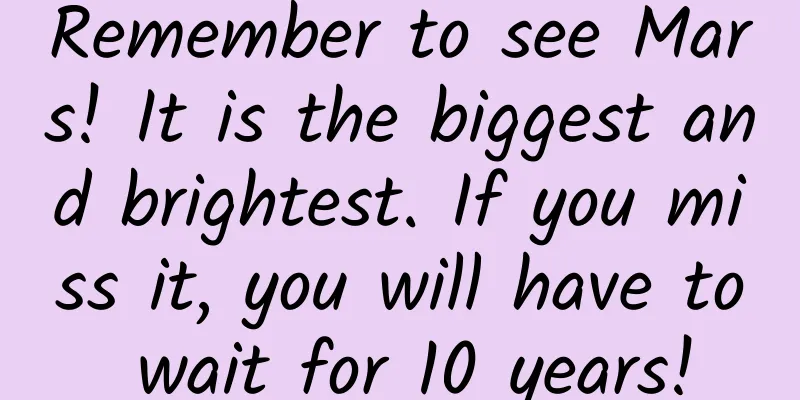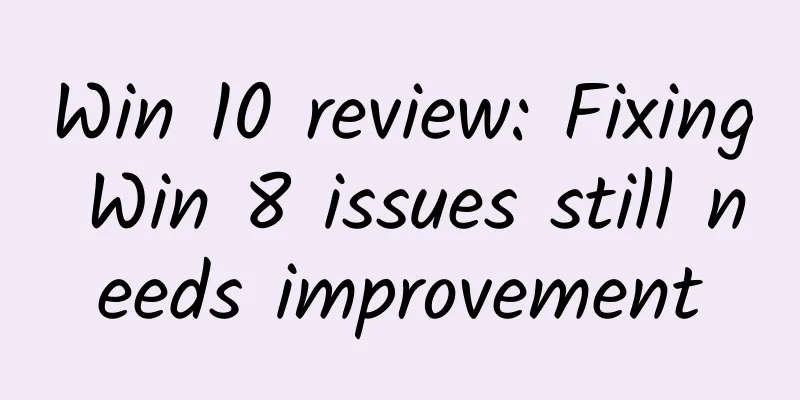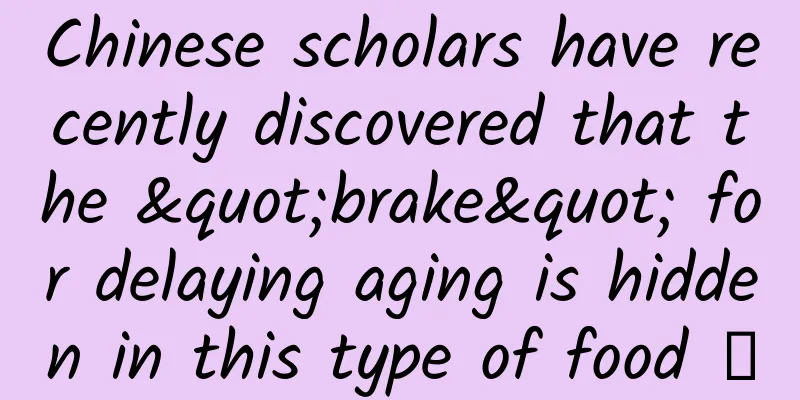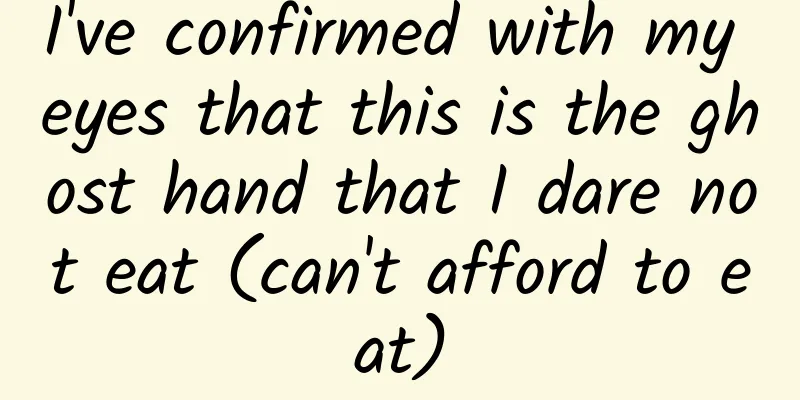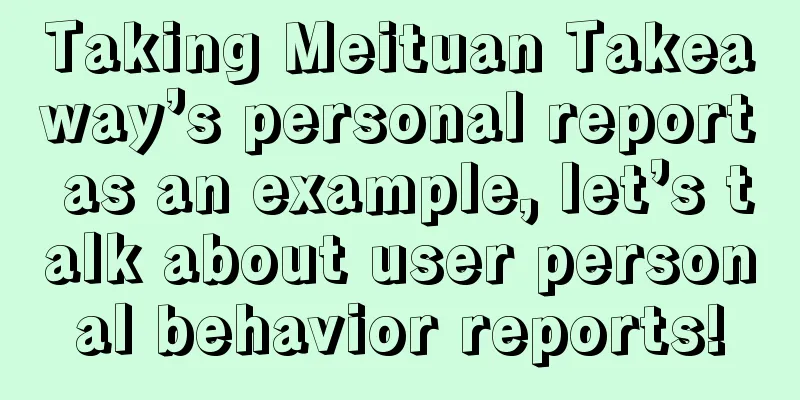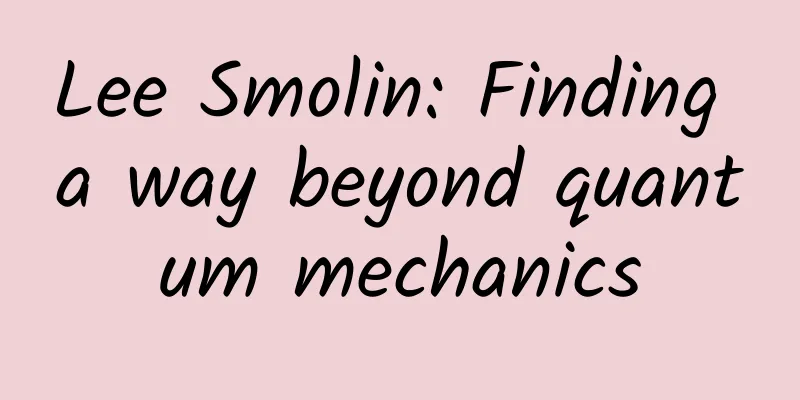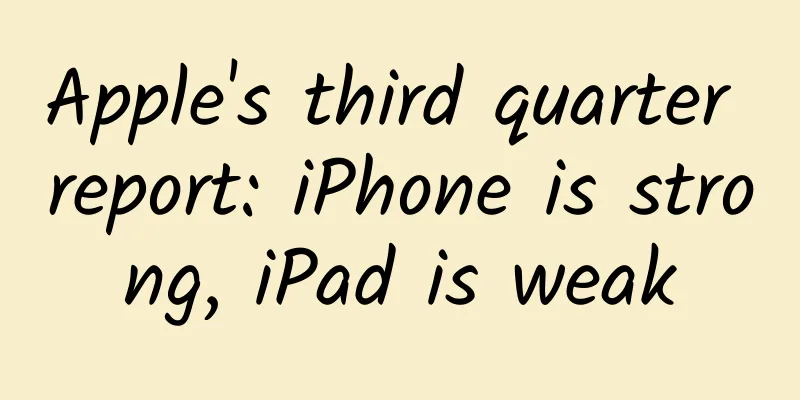In addition to the Mausoleum of Emperor Wen of Han, are there any other major discoveries that have rewritten textbooks?
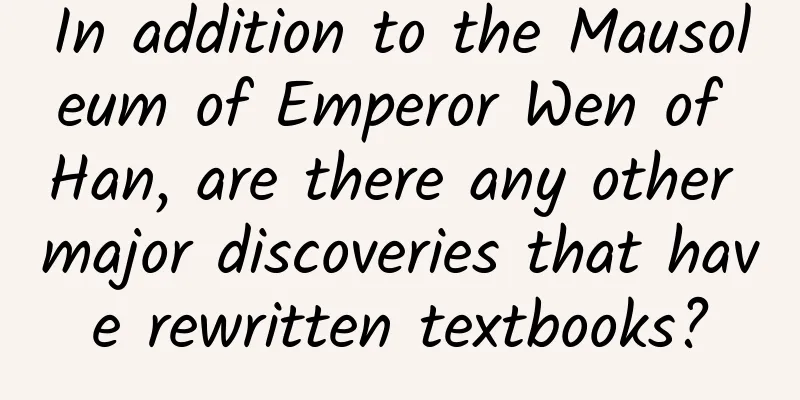
|
In the past two days, every time I opened my Moments, I saw screen after screen of news about Ba Ling. After all, a secret that can be called a "mystery of the ages" has finally been revealed, which is good news for all cultural and museum practitioners! Excavation site of Jiangcun Tomb Source: Shaanxi Provincial Institute of Archaeology However, some are happy while others are worried. Putting aside the need to revise the textbooks, for those who just wrote Ba Ling into their papers, it can be said that it is a bit embarrassing at the moment. I hope I don't have to rewrite it. Although the current coincidences are somewhat amusing, if we look back at the development of the archaeological community over the past century, we will find that such things have happened more than once or twice. It can be said that since the birth of modern archaeology in 1921, various major archaeological discoveries have blossomed everywhere, and many of them have overturned our original cognition. 01 The Afang Palace that Xiang Yu burned was actually not built? Speaking of several cases that have been overturned in the history of archaeology, Xiang Yu and Afang Palace must be mentioned. As the most prestigious "No. 1 Palace in the World", what exactly the Afang Palace looked like has always been a mystery that people have been eager to know. Qing Dynasty - "Afang Palace" (partial) Leaving aside the record of the great hall that could seat tens of thousands of people as recorded in Records of the Grand Historian, just the record in the Fu on Afang Palace alone, "every five steps there was a building, every ten steps there was a pavilion; the corridors were winding, the eaves were high... I don't know how many tens of millions of them there were," is enough to make people yearn for it. After all, as one of the "Four Great Projects of Qin Shihuang" along with the Great Wall, the Mausoleum of Qin Shihuang, and the Qin Straight Road, the other three have already begun to show their prowess, so how bad could the Afang Palace be? Terracotta Warriors丨TuChong Creative However, based on the line in "Fu on Afang Palace" that "the Chu people burned it down, leaving only a pitiful scorched earth", and the record in "Records of the Grand Historian" that "the Qin palaces were burned down, and the fire lasted for three months", many people believe that Afang Palace was burned down by Xiang Yu. But in fact, when the archaeological team of the Chinese Academy of Social Sciences began to excavate the ruins of Afang Palace, they surveyed more than 200,000 square meters but only found a few pieces of burnt earth. This means that there has never been any fire in the area of Afang Palace, let alone a fire that could burn for three months. Moreover, according to subsequent archaeological surveys, the Afang Palace was never built. Due to the huge amount of work, even though there were different forms of buildings and recreational facilities within the overall scope, the main building, the Afang Front Hall, was still at the rammed earth foundation stage without any large-scale buildings. In other words, even if Xiang Yu wanted to burn something, there was nothing to burn. The restoration of the Afang Palace imagined by later generations However, Xiang Yu cannot be said to be innocent. After all, even if he did not burn the Afang Palace, the large areas of burned remains at the Xianyang Palace site prove that Xiang Yu did start the fire. 02 Cao Cao didn’t have seventy-two suspicious tombs? Who is Cao Cao? There may be no doubt about this, but our understanding of Cao Cao is basically from a series of novels represented by "Romance of the Three Kingdoms". However, compared to the rumors of "boiling green plum wine" and "no one in the world can let me down", the most widespread legend about Cao Cao is the legend of his "Seventy-two Suspicious Tombs". It is said that in order to supplement military expenses, Cao Cao once sent people to extensively excavate the tombs of their ancestors. However, when Cao Cao was facing death, he was afraid that his own tomb would suffer the same fate. For this reason, he ordered people to carry 72 suspected tombs out from different directions, so that people would not know the exact location of his tomb. Image source: Shen Lihua, "Study on the Layout of Eastern Wei and Northern Qi Tombs in Yecheng Area" With the publication of novels such as Romance of the Three Kingdoms, Cao Cao's suspicious image has become more deeply rooted in people's minds, and the saying of "Seventy-two Suspicious Tombs" has become even more deeply rooted in people's minds. Of course, this is just a legend. In Cao Cao's "Final Order", it is written that "the Shouling Mausoleum is located on the west plain of Ximen Bao Temple, and the high ground is used as the base. There is no wall or tree." This directly explains the location of his tomb. Moreover, his sons Cao Pi and Cao Zhi both wrote about the funeral and burial. Even in the biographies of Sima Yi and others, there are records that they escorted Cao Cao's coffin to Yecheng for burial. If Cao Cao set up a fake tomb, then he falsified many historical materials left to future generations. Not only during his lifetime, but also after the change of dynasties, there were people who made efforts. And no one discovered it for hundreds of years afterwards. This is really absurd. The stone tablet with the inscription "The Tiger-fighting Halberd Often Used by King Wu of Wei" unearthed by archaeological team Photo courtesy of Xinhua News Agency, Henan However, in the Northern Song Dynasty, due to Cao Cao's simple burial, almost no one knew where his tomb was. Moreover, since the Northern Song Dynasty, Cao Cao has been defined as a treacherous hero, and the 72 suspicious tombs are a proof of his treachery. Even if someone said that Cao Cao would not do such a thing, no one would believe it. However, just because the ancients couldn't confirm it doesn't mean we can't. Since 2008, archaeologists have accidentally discovered the Xigaoxue Tomb. After excavation, experts have verified that the owner of the tomb is the famous Cao Cao. Moreover, the condition of Cao Cao's tomb is consistent with the historical records of a simple burial, with only about 200 burial objects. The male skeleton of two women and one man unearthed from the tomb was also verified to be about 69 years old, which is consistent with the record that Cao Cao died at the age of 66. Based on this, we can answer that there is really only one tomb of Cao Cao. 03 Wasn’t it Cai Lun who invented paper? "The small piece of paper is square. Cai Lun invented paper in the Eastern Han Dynasty." Although this folk tune called "Thirteen Spices" was not written for the purpose of selling paper, it also reveals the general perception of people at that time that the paper we use today was made by Cai Lun, a eunuch in the Eastern Han Dynasty. Cai Lun It is not surprising that people make far-fetched assumptions. The Biography of Cai Lun in the Book of the Later Han clearly states: "Lun came up with the idea of using tree bark, hemp, old cloth and fishnets to make paper. In the first year of Yuanxing, he presented it to the emperor. The emperor was pleased with his ability and everyone used it from then on. Therefore, the world called it "Cai Hou Paper." However, this statement is not accepted by everyone. Some people believe that Cai Lun invented paper, such as Zhang Yi, a philologist in the Three Kingdoms period, and Fan Ye, a historian in the Southern Dynasties. But there are also many people who believe that Cai Lun in the Eastern Han Dynasty was just a reformer, and paper had already begun to replace bamboo slips in the early Han Dynasty. It turns out that the second one is correct. Huang Wenbi, a famous Chinese archaeologist, discovered hemp paper from the Western Han Dynasty at the Han Dynasty beacon tower site in Lop Nur, Xinjiang in 1933. However, the paper was destroyed in the war before it was scientifically identified. In 1957, a batch of objects called "Baqiao Paper" were unearthed in a Western Han Dynasty tomb near Baqiao in the eastern suburbs of Xi'an. After investigation, it was found that the paper was made no later than the time of Emperor Wu of the Western Han Dynasty and should be the earliest paper seen in the world at that time. Baqiao Paper Image Source: Shaanxi History Museum Volunteer Team It is for this reason that the Cai Lun papermaking we see today has been uniformly changed to Cai Lun's improved papermaking method. In addition to the papermaking theory, this Han tomb has overturned many common perceptions. The unearthed bamboo slips, paper and pens overturned various records about Su Qin and Zhang Yi in the Records of the Grand Historian, overturned the traditional theory that Meng Tian made pens, and the unearthed "Daily Book" also overturned the theory that the idea of people turning into ghosts after death was introduced from India. 04 Why did Chen She rebel? The "Chen She Uprising" can be said to be the most famous case in archaeology that subverts cognition. I believe everyone is already familiar with the original text of "The Biography of Chen She", and the sentence "Those who miss the deadline will be beheaded according to the law" has made the strictness of Qin law deeply rooted in people's minds. However, the excavation of a small tomb in Shuihudi, Yunmeng, cast a question mark on this matter. Shuihudi Qin Bamboo Slips丨Screenshot from "National Treasure" In this ancient tomb, archaeologists did not find common burial objects such as jade, gold and silver, but instead unearthed a large number of Qin bamboo slips, which recorded in detail the true appearance of the Qin Dynasty laws at that time. Later scholars, based on the unearthed Qin bamboo slips, began to doubt the reasons for Chen Sheng's uprising. For example, some people believe that there is no provision in Qin law that "if you miss the deadline, you will be beheaded." The Qin bamboo slips "Legal Questions and Answers" state that if you fail to report for labor service, the punishment is flogging; if you are caught within a year, you will be flogging again for loitering. Another Qin bamboo slip, "Corvée", stipulates that those who are late for corvée service for three to five days will be "谇", that is, scolded; those who are late for six to ten days must pay a shield to the court; those who are late for more than ten days must pay a set of armor to the court. If it rains heavily, not only will the latecomers not be punished, but the corvée itself will also be cancelled. However, this statement has not been widely recognized. For example, the practice of "beheading anyone who misses a deadline" was very common in the army, and it is difficult to say whether it continued into corvee labor. And in the Shuihudi Qin Bamboo Slips, there are only records about the "Corvee Law" but no records about the "Government Law". Some people also say that at the end of the Qin Dynasty, the laws of Emperor Qin II, Hu Hai, were different from those before, and were more stringent in both regulations and implementation... In short, although the Shuihudi Qin Bamboo Slips can be called a subversion, they are not a complete subversion. The specific situation can only be known after further archaeological excavation. 05 The story of lighting beacons to trick the princes turned out to be fake? According to the Records of the Grand Historian: The Basic Annals of Zhou, in the Western Zhou Dynasty, King You of Zhou ordered people to light beacons in order to win a smile from Bao Si. The princes came to rescue him, but when they arrived, they found that there was no enemy at all. From then on, King You of Zhou lost all his prestige. When the Quanrong invaded, the princes did not react after seeing the beacon smoke. Finally, the capital of Haojing was destroyed, King You of Zhou died, and the Western Zhou Dynasty fell. As one of the most classic evidences of "beautiful women are the root of trouble", the story of King You of Zhou lighting beacons to trick the princes is known to everyone. However, a bamboo slip that sailed across the ocean has cast a big question mark on this matter. Image: People's Daily This bamboo slip is what we now call the Tsinghua Bamboo Slips. It was originally unearthed by robbers, and the exact time and place of excavation are unknown. We only know that the characters on the Tsinghua Bamboo Slips are Chu characters, and they are likely from the Chu State during the Warring States Period. The reason why this bamboo slip has attracted so much attention is that it contains all the handwritten books before the burning of books by Qin Shihuang. In addition to the "Book of Documents" and chronological history books similar to the "Chronicles", the nearly 2,500 bamboo slips also include national history books similar to the "Guoyu", ritual books similar to the "Yili", and books related to the "Book of Changes"... none of which have been seen for more than 2,000 years. In other words, this is a historical document that Sima Qian had never seen. The content recorded in it is even completely different from the existing historical records. Director Li Xueqin once said with a smile: "The content of the Tsinghua Bamboo Slips is too exciting to read. You can't read too much in one day, otherwise it will make your heart unable to bear it." So what is the story of "Playing Tricks on the Princes by Lighting Beacons" in the Tsinghua Bamboo Slips? In short, King You of Zhou married the queen from the Western Shen Kingdom, who gave birth to the crown prince Yijiu, and then married Baosi, who gave birth to Bopan. King You of Zhou favored Baosi and was ready to make Bopan the crown prince instead. In order to avoid being hunted down, Yijiu fled to the State of Shen, but the hunt was not stopped. So the Marquis of Shen contacted the Rong tribe through the State of Zeng, fought back, defeated the King of Zhou, and the Western Zhou Dynasty perished. Therefore, the story of lighting beacons to trick the princes was most likely fabricated. However, the evidence from the Qinghua Bamboo Slips alone is not enough. The exact truth will still depend on whether there are more archaeological discoveries in the future. 06 Could people eat臊子面 in the Neolithic Age? Regarding the history of China's staple food, the most mainstream view at present is that it was mainly based on corn, which is the porridge and rice that we commonly see today. As for pasta, many scholars believe that it was not popularized until the Han Dynasty in China. Some even believe that pasta making technology was introduced from foreign countries and is not part of the original local grain-eating tradition. However, a bowl that was accidentally knocked over at the Lajia site in Qinghai overturned this idea. Image source: www.nationalgeographic.com Among the residues in the bowl, there were clearly visible yellow substances with traces of curled thin strips. Even though it was severely weathered and only a thin layer of substance remained on the surface, there was no doubt that it was indeed noodles. Through the analysis and identification of archaeologists, it was found that the main ingredients in this bowl of noodles were very similar to millet and sorghum, and it also contained a small amount of oil and animal bone fragments. In other words, as early as 4,000 years ago, our ancestors were eating millet noodles, and even topped with meat sauce! Thus, this bowl of noodles that was half eaten and unfortunately fell to the ground became the earliest archaeological evidence of noodles in the world. The paper on the identification and research of this bowl of noodle-like remains was also published in Nature on October 13, 2005. 07 Conclusion What kind of archaeological discovery can be considered subversive? I guess everyone has their own answer to this question. In addition to the few mentioned in the article, there are many other discoveries in the archaeological world that can be called revolutionary. For example, the discovery of Dunhuang documents refreshed the history of folk associations, and the excavation of the Guodian Chu bamboo slips elevated the Taoist school from "utopian" to "practical". The Xia, Shang and Zhou dynasties, which had always been believed to have replaced each other like later dynasties, might have coexisted. The theory of the starry sky proposed by Mr. Su Bingqi eliminated the theory of inheritance centered on the Central Plains... There are countless examples like this. Excavation of the northern wall of the ruins of the front hall of Afang Palace After all, for a discipline that pursues truth, archaeology itself means subversion. Therefore, understanding archaeology means touching the most authentic history. And if there is a book that can provide an overview of the history of archaeology in China, that would be perfect. Just like the book "Archaeology China" jointly published by Yilv and CITIC Publishing Group. We have carefully selected 15 major sites from the past 5,000 years and gathered 15 archaeological experts to help us clear away the mist of history, trace the brilliant journey of Chinese civilization, and tell the story of the great construction, great exchange, and great dream of Chinese civilization through archaeology. A shovel, witnessing the "sky full of stars" of China; Several generations of hard work have continued the century-old history of Chinese archaeology. Source: Art Travel Culture Some pictures are from the Internet. If there is any infringement, please contact us. |
<<: What is “biocomputing”? Why can’t China fall behind?
>>: From inorganic to organic, she is the pioneer of my country's environmental chemistry industry
Recommend
Do conscripts have preferential cards? What benefits do you enjoy? How to apply and what are the requirements?
The Veterans' Benefit Card is a red business ...
From 30 million to 2.6 million, what benefits can domestically produced MRI machines bring to the people?
Audit expert: Meng Meng Associate Researcher, Ins...
Interview experience: WeChat, NetEase Games, Jinshan Xishanju, Renren
[[144779]] WeChat Interview Experience Backend de...
One hour of sun exposure and 10 kilometers of battery life: Lightyear-1's journey of technological innovation
Your browser does not support the video tag Autho...
African kids wish North Korea happy birthday video
A simple small blackboard with words written on i...
Sit on it and slide down? Snowmobile is not as simple as you think
The Winter Olympics is about to open. When talkin...
Is it illegal not to have a holiday on International Women’s Day in 2022? Is it necessary to have a holiday on Women’s Day? Attached with the latest regulations
We are about to enter March 2022, and there are m...
Tencent Guangdiantong advertising optimization strategy!
In the 2020s, is there still anyone who doesn’t k...
Brutalism and the Utopian Nightmare
Leviathan Press: The designer of the Trellick Tow...
[Fat Bear Science] It is a rumor that drinking coffee causes cancer, but these eating habits really should not become "habits", maybe you have them!
Previously, everyone was flooded with news about ...
Are you aware of the risks of exposure to nail lamps if you love doing manicures?
The Spring Festival is here, and many beauty-lovi...
How to do the preliminary promotion for a newly launched WeChat Mini Program? How to promote WeChat Mini Program?
How to do the preliminary promotion for a newly l...
Tesla recalls 11,000 Model X SUVs due to unsafe seats
According to foreign media reports, Tesla Electri...
Taking SEM advertising as an example, how data analysis can optimize promotion methods!
% ignore_pre_1 % Advertising guru John Wanamaker o...

